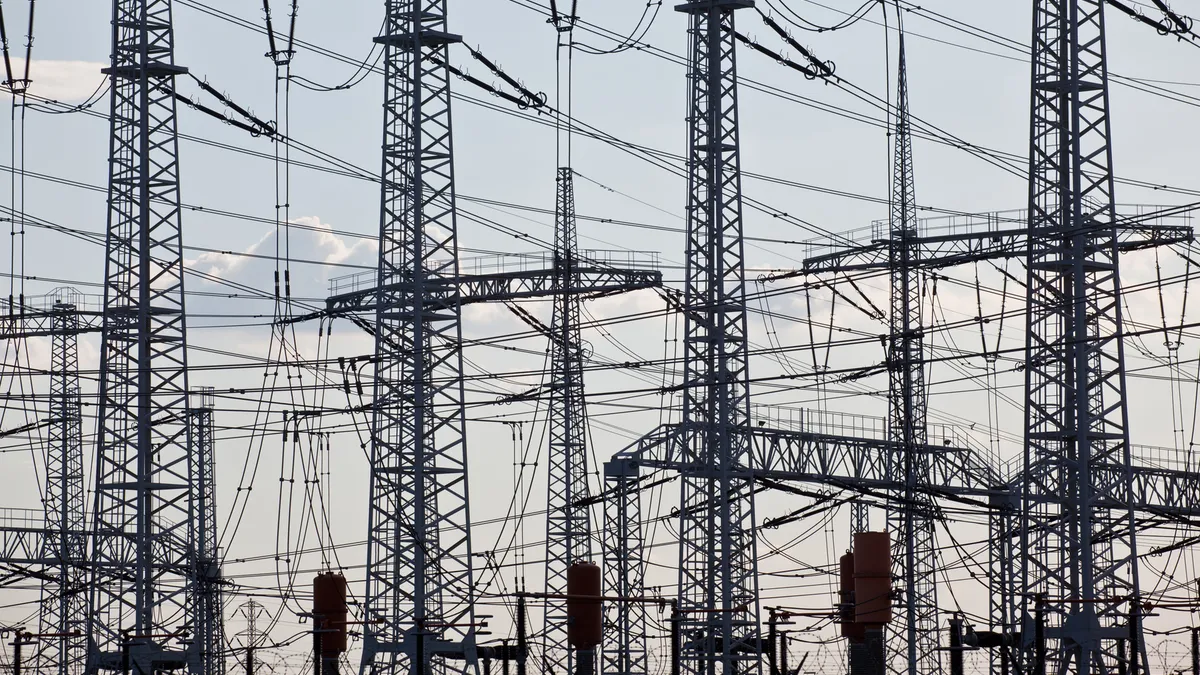Dive Brief:
- President Donald Trump's executive order limiting the installation of bulk power system (BPS) equipment sourced from adversaries of the United States is likely to have a "chilling effect" on transactions, raising costs and slowing the installation of some smart grid devices, according to trade and security experts.
- The May 1 executive order aims to address weaknesses in the utility sector supply chain by initially blocking purchases from countries hostile to the United States. Observers say the long-term impacts will depend on how rules are promulgated to enforce the restrictions.
- "The immediate disruption will be a slowdown in capital projects and the adoption of some technologies," Ollie Whitehouse, global chief technology officer at cybersecurity consultancy NCC Group, told Utility Dive.
Dive Insight:
The bulk power system order appears to have caught the utility sector by surprise, but experts say it should not have — given a growing focus on critical infrastructure security and past actions taken by the Trump administration.
"We've seen some of this movie before," Sanjay Mullick, a partner in Kirkland & Ellis' international trade and national security practice, told Utility Dive. He and other experts pointed to a similar White House order last year, limiting the acquisition of information and communications technology from China and other nations.
The U.S. government is "seeking to interject itself into transactions ... so that it has the authority to require mitigation measures," Mullick said. It shows that the administration prefers a utility supply chain "resourced domestically, or at least through a footprint that is more unambiguously aligned and with national security interests."
Trump's order, released Friday, prohibits transactions with foreign adversaries for BPS equipment as of May 2, but there is still an open question regarding how technology already installed will be impacted. While no countries are named specifically in the order, experts say it will likely impact imports from China and Russia, and to a lesser extent North Korea and Iran.
Because of existing restrictions on the latter two, and how utility supply chains are sourced, the biggest impact will fall to China. However, the order also authorizes the U.S. Department of Energy to establish criteria for recognizing particular equipment and vendors as “pre-qualified," which could allow some equipment to continue being sourced from China.
"Obviously, we can't yank a bunch of stuff out immediately," Mark Testoni, CEO of SAP NS2, SAP’s national security subsidiary, told Utility Dive. "But when your supply chain gets disrupted, that's going to have a big impact. ... Quite honestly, a lot of component parts come from countries that might be considered threat adversaries."
While the order's effective date means it impacts future deals, it also empowers the U.S. Secretary of Energy to develop recommendations on ways to "identify, isolate, monitor, or replace" items which are considered a risk to the bulk power system.
It is possible that as a practical matter the executive order could require removal of existing equipment, Mullick said, adding that it "could certainly have a chilling effect" on technology deals.
"Systems are not just one and done. Systems need to be repaired, should be updated, systems evolve," Mullick said. "The word being used is 'transaction,' and if you think you have a long-term supply and maintenance contract you might feel it's grandfathered in. But let's say you have some particular equipment that is going to get swapped out — I think you could certainly take the view that this is a new transaction."
Renewables, batteries and smart grid tech could all be impacted
The executive order is specific to systems on the bulk power system, which experts say narrows its focus away from utility distribution systems. But the order will ultimately be interpreted and transformed into regulations, so its final impact is unknown.
Promulgating regulations to enforce the executive order could be done in three to six months, said Whitehouse. "But I suspect longer."
The executive order "is expansive and many aspects of its implementation are currently unclear," Jason Johns, an energy partner at Stoel Rives LLP, said in an email. "Until the implementing rules are issued, energy project transactions will need to be proactively assessed."
Impacted technology could include cloud data providers, communications equipment, telemetry systems, transformers or smart grid devices. "They all have to be considered in the scope of this executive order," said Whitehouse. "All the way through to the smart meters that sit in a consumer's home."
Many companies are concerned about what equipment will be covered by the executive order.
"A lot of the renewable sector is worried about batteries" said Mullick. The executive order could wind up imposing "huge costs," he said, likely determined by how many Chinese or Russian companies are in a utility's supply chain.
According to Johns, it is possible DOE may consider smaller generating equipment, such as wind turbines and solar panels, to be bulk power equipment when deployed at utility scale, although such equipment is not generally known to provide transmission reliability.
"Smaller scale deployments of renewable technologies, such as residential and commercial solar, appear to fall outside," of the order, Johns said. "On the other hand, standalone energy storage facilities may fall within the scope."
"Naturally, this will lead to cost increases," said Whitehouse. The countries inferred in the order "have the ability to undercut pretty much every western country on technology."
Experts say the security issues of complicated supply chains extend beyond power and national defense systems.
"The reality is, there's a concern in this country that critical manufacturing components, from IT to pharmaceuticals to now power and grid equipment, need to be sourced closer to home," said Testoni. "Maybe not in the United States, but from trusted sources. ... We're going to see more of this policy shift."















